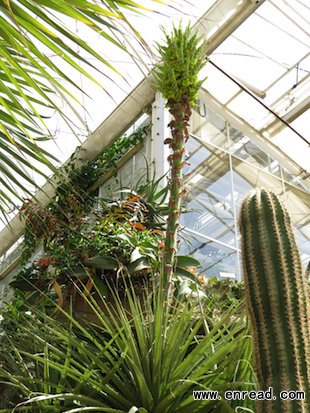A towering South American plant that is believed to kill animals with its spikes1 and use their decaying bodies as fertilizer is about to bloom in England.
据美国雅虎新闻网6月21日报道,日前,英国皇家园艺协会从南美洲引进的“食羊植物”智利普亚菠萝在该协会位于萨里郡的温室中生活了15年之后,终于成功开花。
A rare Puya chilensis was planted at a greenhouse in Surrey about 15 years ago. However, despite its
intimidating2 description, the tall,
spiked3(尖的,有穗的) plant is considered a threatened species.
The Royal Horticultural Society at Wisley has been feeding the plant a diet of liquid fertilizer. "In its natural habitat in the Andes it uses its razor sharp
spines4 to
snare5 and trap sheep and other animals, which slowly starve to death and decay at the base of the plant, providing it with the
grizzly6 equivalent of a bag of fertiliser," reads a description on the RHS website, which adds that the plant emits a "
gruesome(可怕的) scent7."
But does the plant actually trap and eat sheep? Other sources have simply said it is "believed" that the plant traps small animals with its spikes. After the animals die of starvation, the plant is "believed" to then use their decaying bodies as fertilizer to feed itself.
"I'm really pleased that we've finally
coaxed8 our Puya chilensis into flower," horticulturalist Cara Smith said in a press release on the RHS site.
Regardless of whether it actually traps sheep, the plant does have sharp spikes that can grow up to 12 feet high and 5 feet wide. However, it's not all death and danger for this plant. Its flowery blooms reportedly provide nectar for bees and birds.
The Puya chilensis blooms
annually9 in its native land of Chile, but this is the first time it has done so after more than a decade of
cultivation10 efforts from the RHS.
"We keep it well fed with liquid fertiliser as feeding it on its natural diet might prove a bit problematic," Smith said.
"It's growing in the
arid11 section of our glasshouse with its deadly spines well out of reach of both children and sheep alike."

 收听单词发音
收听单词发音 


